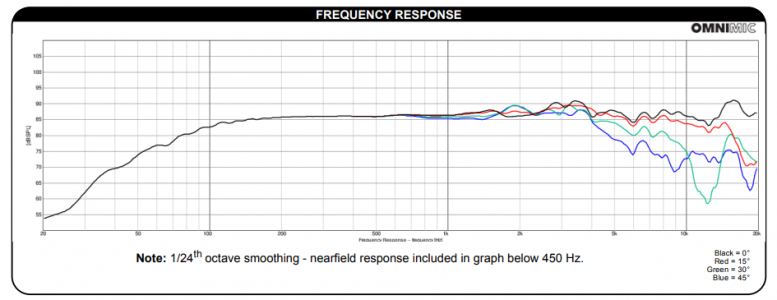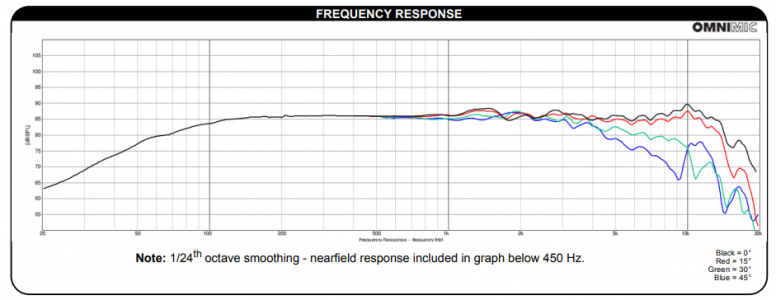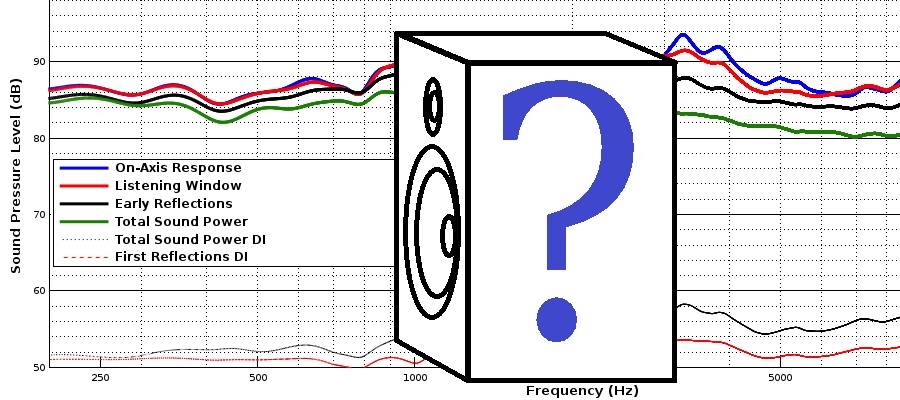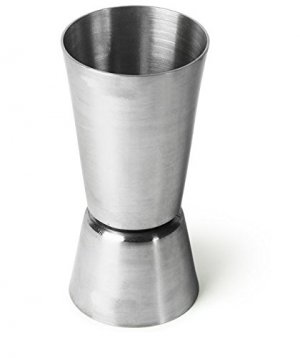More floggingThe resurrected equine has been led to the water but adamantly refuses to drink.
More flogging perhaps?
Or a different beverage?
You are using an out of date browser. It may not display this or other websites correctly.
You should upgrade or use an alternative browser.
You should upgrade or use an alternative browser.
Any objective measurements available for Audio Products ( eg Indiq audio)
- Thread starter Vineethkumar01
- Start date
The information in this video is mis-leading as Paul only considers flat frequency response and try to explain how terrible they sound. Other important measurement parameters like impulse response, step response, minimum phase response, CSD, etc are completely ignored or avoided in this video which is mis-leading.
There are different opinions about this. But this is a worthwhile watch.
It's a well documented fact that a perfectly measured step response speaker will have a flat frequency response and a minimum phase close to zero degrees atleast from 100 Hz to 10 khz. But the opposite is not true. i.e A perfectly flat measured frequency response need not have a perfect step response.
I think the big question for us all is “but will it sound good”?a perfectly measured step response speaker will have a flat frequency response and a minimum phase close to zero degrees atleast from 100 Hz to 10 khz. But the opposite is not true. i.e A perfectly flat measured frequency response need not have a perfect step response.
Given all the variables that come into play I feel it’s a tough one to answer and satisfy everyone.
When a speaker reproduces audio measurably good, now how will timbre be different?
refer to my earlier post on timbre.
And to add:
just because a speaker measures spectacularly, does it mean that Latha Mangeshkar will sound "natural" when played through that speaker? This is where "Timbre" matters, the ability of a speaker to "reproduce" sound close to "natural" as possible.
What Spinorama? you're using this term incorrectly.If the cheapest speakers measures well and have a spinorama equal to the most expensive speakers, yes one can buy that one and be done with it.
What nonsense!And that’s because the industry knows that to manufacture an exceptionally measuring speaker there are costs……and profits to milk.
Vineethkumar01
Well-Known Member
While we are on the track of listing videos for learning about these aspects, why not learn from people who have done pioneering work in audio, whether it is in research related to speakers or people who have brought out speakers which have been widely successful. So that one can have a balance of perspective.
This post is dedicated to those who want to broaden their horizons of knowledge beyond what they already know/don't know about Toole's work and the subjectivists who don't consider measurements important.
Ultimately, whether one wants to be purely subjective, purely objective, or have a balance of both is one's own decision. But before going out and trying to establish that one's own perspective is the only right one, why don't we understand a little bit about what is the work that has already been done and what is the perspective of real industry experts (compared to opinions of people who have no formal training is the science behind audio and is just trying to sell their products).
Here is a lighter one:
Here is one which is rooted in decades of research:
I personally have a bit more reverence towards Dr Geddes' work because I can relate more to his observations. I can guarantee that one who spends the time to understand this talk will come out wiser about certain objective aspects like distortion, group delay, timing (and audibility of diffraction), frequency response, compression spectrum, impact of rooms, and a lot of other things. (This is just one of his talks and there are many more enlightening ones)
(This is just one of his talks and there are many more enlightening ones)
Of course, we are always limited by the current state of the art in understanding about these aspects and our auditory system is not completely understood. But this is sort of the best we have at the moment.
This post is dedicated to those who want to broaden their horizons of knowledge beyond what they already know/don't know about Toole's work and the subjectivists who don't consider measurements important.
Ultimately, whether one wants to be purely subjective, purely objective, or have a balance of both is one's own decision. But before going out and trying to establish that one's own perspective is the only right one, why don't we understand a little bit about what is the work that has already been done and what is the perspective of real industry experts (compared to opinions of people who have no formal training is the science behind audio and is just trying to sell their products).
Here is a lighter one:
Here is one which is rooted in decades of research:
I personally have a bit more reverence towards Dr Geddes' work because I can relate more to his observations. I can guarantee that one who spends the time to understand this talk will come out wiser about certain objective aspects like distortion, group delay, timing (and audibility of diffraction), frequency response, compression spectrum, impact of rooms, and a lot of other things.
Of course, we are always limited by the current state of the art in understanding about these aspects and our auditory system is not completely understood. But this is sort of the best we have at the moment.
Last edited:
I wouldn't say "misleading"...The information in this video is mis-leading as Paul only considers flat frequency response and try to explain how terrible they sound. Other important measurement parameters like impulse response, step response, minimum phase response, CSD, etc are completely ignored or avoided in this video which is mis-leading.
It's a well documented fact that a perfectly measured step response speaker will have a flat frequency response and a minimum phase close to zero degrees atleast from 100 Hz to 10 khz. But the opposite is not true. i.e A perfectly flat measured frequency response need not have a perfect step response.
For a blind half-knowledge measurement bhakt like me
The Dunlavy interview you posted starts with something like what Paul said and goes deeper into far more detail.
For those interested, watching the video and then reading the interview will be much more helpful.
IMO no two speakers of the same size or different sizes that have a similar frequency responce need to sound same. This will go with even speakers that have been tweaked to have a similar frequency responce, let us say flat frequency responce.
A speaker has a number of physical and electrical characterestics and components that comes into play in its final acoustic delivery. Some of the physical attributes include type of cone material, type of magnet including its induction and density, voice coil, mass, stiffness to name a few. Some electrical characterestics include impedance, xmax, damping factors......etc.
The final acoustic output of say any two or a number of different speakers will be a combination of above factors irrespective of their frequency responce being similar, or, tweaked to be similar.
Let me take the example of Dayton RS100-4 aluminium cone driver and Dayton Audio RS100P-4 treated paper cone driver.
The measured frequency responce of both drivers are almost similar with flat responce from 400hz to 5khz at its rated spl of 85db at 1W/1meter.
But in real world as I have expereinced with the above drivers, the RS100 has a better low frequency responce than the RS100P which is better in higher frequencies.
The musical character between the alu cone and paper cone drivers are slighly different.
Now let us take any other emperical driver which has say a natural responce from 400hz to 5 khz with some peaks and dips in between. Correcting these dips and peaks through active or passove crossover will not produce the same output, as we are not tweaking the physical or electrical characterestics of the driver as these are fixed by design. We are actually tweaking the input signal either actively (digital) or passively (crossover) so that the output is similar as the natural responce of the Dayton drivers.
In effect we are chopping or boosting the input signal.
In a nutshell, as far as I understand, a speaker driver's physical or electricl characterestics cannot be altered, only the electrical signal that it receives can be tweaked to tide over the vagaries.
That is one of the primary reasons one should not try and correct dips and only try and correct peaks and that too not by more than 1 to 1.5 db at those peaks. Boosting usually causes more artifacts. Altering the input signal can also cause timing and phase issues.
A speaker has a number of physical and electrical characterestics and components that comes into play in its final acoustic delivery. Some of the physical attributes include type of cone material, type of magnet including its induction and density, voice coil, mass, stiffness to name a few. Some electrical characterestics include impedance, xmax, damping factors......etc.
The final acoustic output of say any two or a number of different speakers will be a combination of above factors irrespective of their frequency responce being similar, or, tweaked to be similar.
Let me take the example of Dayton RS100-4 aluminium cone driver and Dayton Audio RS100P-4 treated paper cone driver.
The measured frequency responce of both drivers are almost similar with flat responce from 400hz to 5khz at its rated spl of 85db at 1W/1meter.
But in real world as I have expereinced with the above drivers, the RS100 has a better low frequency responce than the RS100P which is better in higher frequencies.
The musical character between the alu cone and paper cone drivers are slighly different.
Now let us take any other emperical driver which has say a natural responce from 400hz to 5 khz with some peaks and dips in between. Correcting these dips and peaks through active or passove crossover will not produce the same output, as we are not tweaking the physical or electrical characterestics of the driver as these are fixed by design. We are actually tweaking the input signal either actively (digital) or passively (crossover) so that the output is similar as the natural responce of the Dayton drivers.
In effect we are chopping or boosting the input signal.
In a nutshell, as far as I understand, a speaker driver's physical or electricl characterestics cannot be altered, only the electrical signal that it receives can be tweaked to tide over the vagaries.
That is one of the primary reasons one should not try and correct dips and only try and correct peaks and that too not by more than 1 to 1.5 db at those peaks. Boosting usually causes more artifacts. Altering the input signal can also cause timing and phase issues.
Enkay78
Well-Known Member
In a nutshell measurements can be biased but human ears aren’t.IMO no two speakers of the same size or different sizes that have a similar frequency responce need to sound same. This will go with even speakers that have been tweaked to have a similar frequency responce, let us say flat frequency responce.
A speaker has a number of physical and electrical characterestics and components that comes into play in its final acoustic delivery. Some of the physical attributes include type of cone material, type of magnet including its induction and density, voice coil, mass, stiffness to name a few. Some electrical characterestics include impedance, xmax, damping factors......etc.
The final acoustic output of say any two or a number of different speakers will be a combination of above factors irrespective of their frequency responce being similar, or, tweaked to be similar.
Let me take the example of Dayton RS100-4 aluminium cone driver and Dayton Audio RS100P-4 treated paper cone driver.
The measured frequency responce of both drivers are almost similar with flat responce from 400hz to 5khz at its rated spl of 85db at 1W/1meter.
But in real world as I have expereinced with the above drivers, the RS100 has a better low frequency responce than the RS100P which is better in higher frequencies.
The musical character between the alu cone and paper cone drivers are slighly different.
Now let us take any other emperical driver which has say a natural responce from 400hz to 5 khz with some peaks and dips in between. Correcting these dips and peaks through active or passove crossover will not produce the same output, as we are not tweaking the physical or electrical characterestics of the driver as these are fixed by design. We are actually tweaking the input signal either actively (digital) or passively (crossover) so that the output is similar as the natural responce of the Dayton drivers.
In effect we are chopping or boosting the input signal.
In a nutshell, as far as I understand, a speaker driver's physical or electricl characterestics cannot be altered, only the electrical signal that it receives can be tweaked to tide over the vagaries.
That is one of the primary reasons one should not try and correct dips and only try and correct peaks and that too not by more than 1 to 1.5 db at those peaks. Boosting usually causes more artifacts. Altering the input signal can also cause timing and phase issues.
I still fail to comprehend why a absolutely similar measuring speakers should not sound similar. I mean aren’t the sound waves produced not similar? Isnt it physics?
Vineethkumar01
Well-Known Member
While I agree with many of the aspects you pointed out, I have a difference of opinion regarding some. For example, we are saying that Dayton RS 100-4 and RS100P-4 are similar drivers. But their polar frequency response measurements indicate slightly differently.IMO no two speakers of the same size or different sizes that have a similar frequency responce need to sound same. This will go with even speakers that have been tweaked to have a similar frequency responce, let us say flat frequency responce.
A speaker has a number of physical and electrical characterestics and components that comes into play in its final acoustic delivery. Some of the physical attributes include type of cone material, type of magnet including its induction and density, voice coil, mass, stiffness to name a few. Some electrical characterestics include impedance, xmax, damping factors......etc.
The final acoustic output of say any two or a number of different speakers will be a combination of above factors irrespective of their frequency responce being similar, or, tweaked to be similar.
Let me take the example of Dayton RS100-4 aluminium cone driver and Dayton Audio RS100P-4 treated paper cone driver.
The measured frequency responce of both drivers are almost similar with flat responce from 400hz to 5khz at its rated spl of 85db at 1W/1meter.
But in real world as I have expereinced with the above drivers, the RS100 has a better low frequency responce than the RS100P which is better in higher frequencies.
The musical character between the alu cone and paper cone drivers are slighly different.
Now let us take any other emperical driver which has say a natural responce from 400hz to 5 khz with some peaks and dips in between. Correcting these dips and peaks through active or passove crossover will not produce the same output, as we are not tweaking the physical or electrical characterestics of the driver as these are fixed by design. We are actually tweaking the input signal either actively (digital) or passively (crossover) so that the output is similar as the natural responce of the Dayton drivers.
In effect we are chopping or boosting the input signal.
In a nutshell, as far as I understand, a speaker driver's physical or electricl characterestics cannot be altered, only the electrical signal that it receives can be tweaked to tide over the vagaries.
That is one of the primary reasons one should not try and correct dips and only try and correct peaks and that too not by more than 1 to 1.5 db at those peaks. Boosting usually causes more artifacts. Altering the input signal can also cause timing and phase issues.
Here is the limited polar frequency response measurements of RS 100-4 (only upto 45 degrees)

Here is the same data for RS RS100P-4

I wouldn't compare low frequency responses as it is alignment dependent and there is fair amount of variation in their T/S parameters. However in the 400Hz-5kHz range, there are enough differences between the two drivers to make them sound different. One of the most noteworthy aspects is the uniformity of polar response for the RS100P-4 compared to the RS 100-4. One can see that the consistency of off axes response is maintained upto about 9kHz by the paper cone, whereas in the aluminum cone shown in the first plot, it sort of goes haywire after 2kHz. This behavior is certainly going to make one sound different from the other. The paper cone may be better suited in an application where one wants to have a low order high pass filter on the mid. It will also lend itself more to EQ in the higher frequency range since the driver anomalies present themselves similarly in ON and OFF axis measurements
Again, we are not looking at distortion measurements of these drivers, which will have differences and will contribute to some extent regarding their overall sound quality. Usually, the stiff cone drivers with high harmonic distortion in the break up region will lend better to passive notch filters for cone break up suppression than active notch filters. The passive notch will also bring down the sub-harmonic distortion rises caused by the the resonance-amplification of distortion products.
So, it is very hard to compare between these kind of drivers and predict whether they will sound similar given that we have differences in the frequency response itself.
Regarding the EQ ability of a driver, first we need drivers that lend themselves to EQ. Drivers should have the capability to handle sufficient amount of power without causing compression. They should have sufficient mechanical limits with ability to keep distortion at bay amongst other factors. Then we should know which anomalies to EQ. The easily doable ones are the ones which show up with good consistency in ON and OFF axis measurements, which essentially speaks about their linear time-invariant nature. LTI artifacts are the ones we should focus on while EQing. Then comes anomalies related to the overall acoustic construct, which often do not lend themselves to EQ and affect the sound. So drivers sounding same after EQ is also dependent on a lot of factors.
If anyone is interested in identifying what can be EQed and what cannot be, I would highly suggest this paper by David Gunness:
Enkay78
Well-Known Member
Or are you understanding differently.What Spinorama? you're using this term incorrectly.
I exactly meant two speakers with same spinorama - how can they sound different?
How can a mobile phone speaker measures well? Even the ‘good sounding’ iPad speakers struggles to measure well.A particular mobile phone speaker "might" measure well, would you rather listen to your music on it because it measures well?
And when we say measures well, are we referencing a flat response or a Harman curve? (My comments are more towards a standard audio curve/frequency response ……but especially of a spinorama, which includes the reflections and directivity response)
It is called Spin-O-Rama because it involves rotating the speaker 360-degrees on both its vertical and horizontal axes to gain the necessary data to develop the measurement set. A frequency response measurement is taken every 10-degrees on the complete vertical and horizontal axes, and the Spin-O-Rama curves are calculated from all of those measurements. The science used to establish this measurement set as a guide to loudspeaker performance has been held in such high esteem that the American National Standards Institute(aka. ANSI) and the Consumer Technology Association (aka. CTA) have incorporated it into their standard for measuring home audio loudspeakers. This standard is known as ANSI/CTA-2034-A.
Understanding Loudspeaker Review Measurements Part I
Audioholics’ speaker reviews often contain detailed measurement graphs. In this article, we explain frequency response and the set of curves known as the 'Spin-O-Rama' to help you pick better product.www.audioholics.com
keith_correa
Well-Known Member
I think many here with limited knowledge (this includes me, and I don't say this disparagingly) consider the frequency response measure as the lone arbiter of sonic signature. This is just one measure among many of a transducer.
And, yes, if all the measures are exactly the same, a mobile phone speaker that measures the same as a Scanspeak Revelator WILL sound (timbre included) exactly the same!
And, yes, if all the measures are exactly the same, a mobile phone speaker that measures the same as a Scanspeak Revelator WILL sound (timbre included) exactly the same!
Enkay78
Well-Known Member
Which off course is not possible.....as the diaphragm sizes/driver sizes of mobile phones cannot , not in this universe, to measures as well as a bookshelf/floorstanders. (It's theorising unproductively).I think many here with limited knowledge (this includes me, and I don't say this disparagingly) consider the frequency response measure as the lone arbiter of sonic signature. This is just one measure among many of a transducer.
And, yes, if all the measures are exactly the same, a mobile phone speaker that measures the same as a Scanspeak Revelator WILL sound (timbre included) exactly the same!
At the same time TWO SPEAKERS to measures exactly is also, unless a fluke, a profound challenge for speaker design and engineering.
Imo , two speakers which may measure almost same will have very less/nil audible differences....timbre included.
This much is apparent, all excellent speakers that measures well will sound well and have high preference score. (Toole and Harman had done extensive research on this. And the evidence is beyond any doubt/confusion.)
Vineethkumar01
Well-Known Member
This is one of the areas where we hit the limits of Toole/Harman research.This much is apparent, all excellent speakers that measures well will sound well and have high preference score. (Toole and Harman had done extensive research on this. And the evidence is beyond any doubt/confusion.)
If you spend time to listen to Geddes' words you will know another limitation.
Throw that preference score out of the window.
It is mostly useless because it can be tricked to produce high scores with lame sounding speakers as very experienced designers have illustrated multiple times in the past. They say that for speaker design, use brains and ears (brain not only for processing the audio signal but also to keep learning and updating one's own knowledge so that we don't get stuck as a "Frog in the well, whose boundaries are defined by Harman's research")
liverpool_for_life
Well-Known Member
It is mostly useless because it can be tricked to produce high scores with lame sounding speakers as very experienced designers have illustrated multiple times in the past.
First time I'm hearing of this. Any links?
Vineethkumar01
Well-Known Member
Here is one set pointed out by Kimmo Saunisto:First time I'm hearing of this. Any links?

Preference rating: What score speaker do you use? What can you tolerate? Where do you start to deviate? Where can you hear until?
But if you were starting from scratch in identifying a pool of speakers to evaluate, the Preference Rating could narrow the choices This is the actual real benefit of the score, without it the review index is long and unsortable. People trying to compare 4.5s to 5.2s purely via score have...
 audiosciencereview.com
audiosciencereview.com
If interested, read the discussion around here:
VituixCAD
Open baffle is another special case in Diffraction tool. It does not cause any diffraction effects because program assumes that edge is thin and sides of the radiating surface are identical. Rear diffraction fully compensates front diffraction and vice versa. So model contains just directivity...
square_wave
Well-Known Member
Was just chatting with someone who has spend decades in speaker design and high end manufacturing. He says measurements cannot tell the whole story for tone / timbre. Everything including driver materials, cabinet construction and approach, crossover components makes considerable difference. Time elements is also a 3rd dimension for dynamics. According to him, there are many freelance speaker designers out there whose service anyone can obtain. For a given set of drivers and cabinet volume, they will provide a flat measuring solution. No rocket science there.
Unfortunately the amplitude versus frequency graph is the sole parameter used by most reviewers of in-ear earphones. But in their defence most IEM reviewers readily admit that the frequency-amplitude response measurement does not tell how good or bad would be the tonality/timbre, ability to resolve details in the music, the sense of width, depth and height, the subjective sense of musicality, tonal weight, etc. The only thing it can tell with some level of confidence is the tonal balance of bass, mids and treble (neutral, Harman Neutral, Harman Neutral bass boosted, Harman Neutral treble boosted, plain and simple V shape, W, U, etc... consider the frequency response measure as the lone arbiter of sonic signature. This is just one measure among many of a transducer.
All of the above applies to speakers as well.
Last edited:
I think there are 2 separate questions at play here.
One is from a designer's point of view - viz, how do you design a good speaker. Here, you need to have a target response in mind that may or may not be perfectly flat (depending on your beliefs as to what sounds good and/or will sell), and then you jolly well better rely on science and measurements to achieve your design goal.
The second is from a listener's point of view - viz, what speakers sounds best to you. It is patently absurd to point to statistics about what sounds good to a large population of people and say that a speaker that matches these characteristics is definitively what you should buy. It could be a useful starting point for someone new to the hobby, but at some point, a listener ends up knowing what he likes and THAT should take primacy.
Put another way: chefs make food that they think will appeal to most of their customers. That doesnt mean i have to necessarily like the biryani that seems to be the most popular, if my taste buds say otherwise.
I am not really sure why this is such a hotly-debated topic, to be honest. Does anyone REALLY think that we should buy speakers (or any other gear) that doesnt sound as good to our ears because it matches some broad statistical preferences? If not, what are we arguing about?
One is from a designer's point of view - viz, how do you design a good speaker. Here, you need to have a target response in mind that may or may not be perfectly flat (depending on your beliefs as to what sounds good and/or will sell), and then you jolly well better rely on science and measurements to achieve your design goal.
The second is from a listener's point of view - viz, what speakers sounds best to you. It is patently absurd to point to statistics about what sounds good to a large population of people and say that a speaker that matches these characteristics is definitively what you should buy. It could be a useful starting point for someone new to the hobby, but at some point, a listener ends up knowing what he likes and THAT should take primacy.
Put another way: chefs make food that they think will appeal to most of their customers. That doesnt mean i have to necessarily like the biryani that seems to be the most popular, if my taste buds say otherwise.
I am not really sure why this is such a hotly-debated topic, to be honest. Does anyone REALLY think that we should buy speakers (or any other gear) that doesnt sound as good to our ears because it matches some broad statistical preferences? If not, what are we arguing about?
Buy from India's official online dealer!
Similar threads
- Replies
- 4
- Views
- 1K
- Replies
- 2
- Views
- 4K
- Replies
- 3
- Views
- 16K
- Replies
- 29
- Views
- 23K
- Replies
- 0
- Views
- 712


